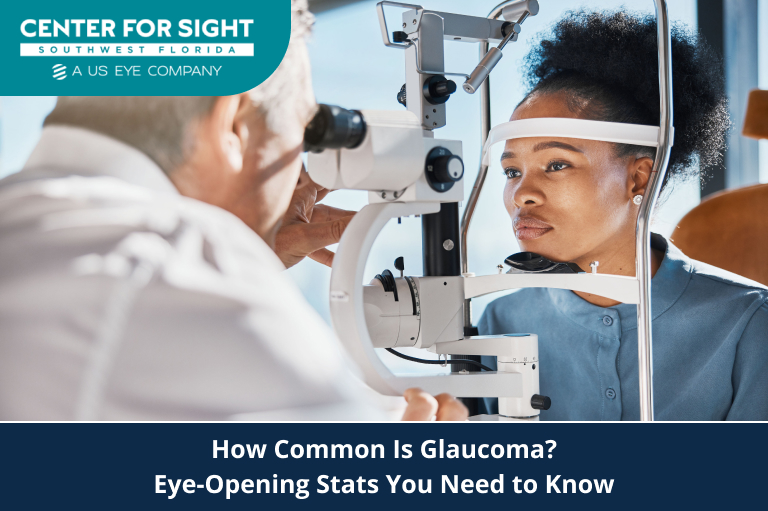Reviewed By: Julie A. Carter, M.D.
What If You’re Going Blind—And Don’t Even Know It?
That’s exactly what happens to millions of people with glaucoma every year.
Glaucoma is one of the leading causes of blindness worldwide. The worst part? It has no symptoms in its early stages. You won’t feel pain. You won’t notice vision loss. By the time you realize something’s wrong, it’s already too late.
Right now, over 4.22 million people in the U.S. have glaucoma, and half of them don’t even know it. Globally, that number climbs to 80 million—and it’s rising fast.
Think about it. You could be losing your sight right now and have no clue. And once your vision is gone, there’s no way to get it back.
But here’s the good news: glaucoma is treatable if caught early.
Let’s break it all down.
What Is Glaucoma? And Why Should You Care?
Glaucoma is an eye disease that damages the optic nerve, usually due to increased eye pressure. Once vision is lost, it cannot be restored. That’s why early diagnosis and treatment are so important.
The most common type, open-angle glaucoma, develops gradually and without pain. Most people don’t realize they have it until it’s too late.
There’s no cure for glaucoma, but glaucoma surgery, medications, and laser treatments can slow or stop its progression. And the earlier you catch it, the better your chances of saving your sight.
How Common Is Glaucoma? The Numbers Don’t Lie
If you think glaucoma is rare, think again. Here are the eye-opening stats:
- 60 million have open-angle glaucoma, the most common form.
- 1 in 10,000 babies in the U.S. is born with congenital glaucoma.
- 9% to 12% of blindness worldwide is due to glaucoma.
- African Americans are 6 to 8 times more likely to develop glaucoma than Caucasians.
Are You at Risk? Here’s Who Should Worry About Glaucoma
Glaucoma can affect anyone. But some people are at higher risk than others:
✅ Over 60 years old – Risk increases as you age.
✅ Family history of glaucoma – Genetics play a major role.
✅ African American, Hispanic, or Asian – These groups are at higher risk.
✅ Diabetics – High blood sugar can damage the optic nerve.
✅ Severely nearsighted individuals (high myopia) – Eye pressure can be higher in these cases.
If you check even one of these boxes, you need regular eye exams. No exceptions.

4 Surprising Facts About Glaucoma
1. Glaucoma Is a Leading Cause of Blindness
Without treatment, glaucoma can and will lead to blindness. But here’s the good news: with early detection and modern treatments, blindness is rare. In developed countries, only 5% of glaucoma patients experience vision loss severe enough to qualify as legally blind.
The key? Get checked early.
2. There Is No Cure—But Treatment Works
Once vision is lost, it’s gone for good. But treatments like glaucoma laser surgery, prescription eye drops, and minimally invasive surgery can slow or stop further damage. That’s why early diagnosis is critical.
3. Glaucoma Develops Without Symptoms
Most people assume eye diseases come with symptoms. Not glaucoma. It’s called the “silent thief of sight” for a reason. You won’t feel pain. You won’t notice gradual vision loss. By the time you do, it’s already advanced.
4. Early Detection Can Save Your Sight
The only way to catch glaucoma early is through a comprehensive eye exam. A simple dilated eye test can detect signs of glaucoma before you lose vision. If you’re over 40, at high risk, or just want peace of mind—schedule an exam today.
The Cost of Ignoring Glaucoma
Let’s talk numbers. Glaucoma isn’t just a health crisis—it’s an economic one, too.
- Glaucoma costs the U.S. $2.86 billion annually in medical expenses and lost productivity.
- It accounts for over 10 million eye doctor glaucoma specialist visits each year.
- People with glaucoma-related blindness face higher medical costs, lost wages, and reduced independence.
Early detection isn’t just good for your eyes—it saves money, too.
How Is Glaucoma Treated?
If you’re diagnosed with glaucoma, don’t panic. There are multiple glaucoma treatment options, including:
✔️ Prescription Eye Drops – Reduce eye pressure and slow damage.
✔️ Glaucoma Laser Surgery – Improves fluid drainage to lower pressure.
✔️ Minimally Invasive Glaucoma Surgery (MIGS) – A safer, faster-recovery option.
✔️ Traditional Glaucoma Surgery – Used in advanced cases.
See a glaucoma eye specialist early. They’ll help determine the best course of action.
Take Action And Protect Your Vision Today
Glaucoma doesn’t wait. Neither should you. Here’s what you can do today to protect your sight:
✅ Get an eye exam—especially if you’re over 40.
✅ Ask about a dilated eye exam to check for early glaucoma signs.
✅ Know your risk factors and take them seriously.
✅ Don’t ignore vision changes—early detection is everything.
If you or a loved one is at risk for glaucoma, don’t wait until it’s too late.
Established over 30 years ago, Center For Sight is one of the nation’s most recognized multi-disciplinary physician groups. We are here to help you enjoy life to the fullest by protecting, preserving, and restoring the most precious gift—the gift of sight with personal attention and compassionate care.
If you have questions about early tests or glaucoma surgery, book an appointment at our advanced laser and cataract center today. Let’s protect your vision—before it’s too late.



